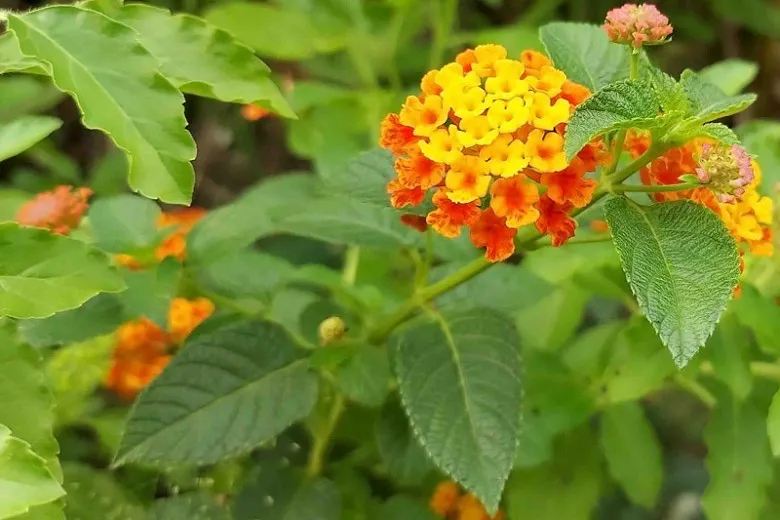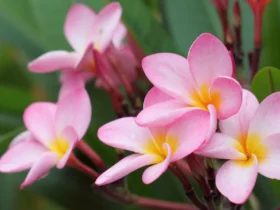Lantana urticoides, commonly known as Texas Lantana, is a tough and visually striking shrub native to the southwestern United States. Its vibrant flowers, resilience in challenging conditions, and ability to attract pollinators make it a popular choice for gardens.

Here are the key features and care guidelines for this remarkable plant:
Description:
- Texas Lantana is a deciduous spreading shrub that forms a bushy mound of broadly ovate, rough-textured, toothed leaves. The leaves are approximately 2 inches (5 cm) in length.
- The plant blooms over an extended period, from mid-spring to fall. Its rounded clusters of tubular flowers are a prominent feature, and they transition in color from yellow to orange to red as they mature.
- The flowers are highly attractive to bees, butterflies, and other pollinating insects, making it a valuable addition to pollinator-friendly gardens.
- After flowering, the plant produces round, fleshy, deep purple-black berries. While these berries are toxic to mammals, they are a food source for birds.
Size and Growth Habit:
- Texas Lantana can grow to a height of 2 to 3 feet (60 to 90 cm) and spread to 4 to 6 feet (120 to 180 cm) in width.
Cultural Requirements:
- This shrub thrives in poor to medium, well-drained soils that are on the dry side.
- Texas Lantana is well-suited for full sun conditions, which contribute to its remarkable heat and drought resistance.
- It is a versatile plant that can be used in various garden settings, including beds, borders, cottage gardens, coastal gardens, Mediterranean-themed landscapes, and native plant gardens.
- The plant is known for its resilience and has no serious pest or disease issues. It is also deer-resistant.
Maintenance and Propagation:
- Winter pruning is recommended to control the size and shape of Texas Lantana.
- The plant can be propagated through several methods, including seed sowing in late winter to spring, cuttings in mid-summer to fall, and division in winter.
Toxicity:
- It’s crucial to handle Texas Lantana with care, as it is toxic if ingested. Contact with the foliage may also irritate the skin. Protective gloves and equipment are recommended when handling the plant.
Origins:
- Texas Lantana is native to the southwestern United States, specifically Arizona, New Mexico, and Texas.
In summary, Lantana urticoides (Texas Lantana) is a resilient and visually captivating shrub that thrives in hot and dry conditions. Its stunning flowers, ability to attract pollinators, and resistance to challenging environments make it a valuable addition to gardens seeking vibrant color and ecological benefits. However, due to its toxicity, caution should be exercised when handling the plant, especially around pets and humans.








